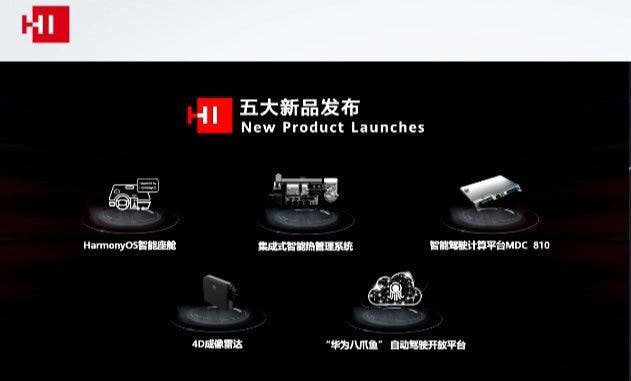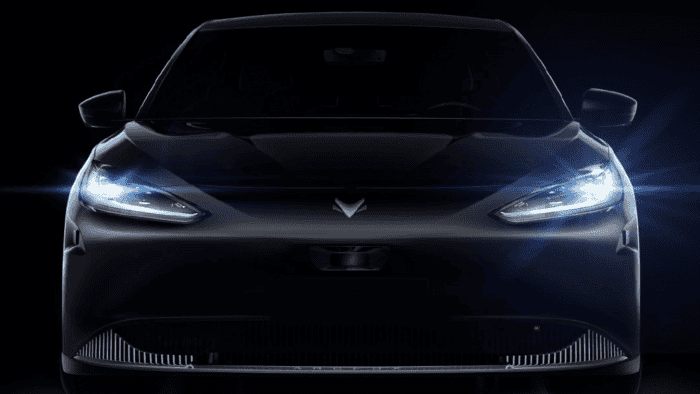On the eve of the Shanghai International Auto Show in 2021, Huawei released a new generation of smart components and solutions including 4D imaging radar, AR-HUD, and MDC810. At the end of October 2020, Huawei released the HI brand. The brand focuses on in-depth cooperation with car companies in the Huawei Inside mode to create smart cars. The company can boast of a new smart car digital architecture, five smart systems, and a smart cockpit. Huawei today released a new generation of components and solutions including 4D imaging radar, AR-HUD, and MDC810.

HarmonyOS integration
Huawei’s smart cockpit solution focuses on computing platforms. This includes the HarmonyOS vehicle operating systems and core services, display platforms, and software/hardware ecosystems. It helps automakers, tier-one suppliers, and application partners develop services and functions that meet user needs. Also, Huawei’s hardware technology improves user experience. The Kirin car module with independent NPU can do complex end-side processing. We see things like an in-car smart screen with a silky touch, smaller size but with a larger field of view.
Huawei AR-HUD
Huawei’s AR-HUD has a volume of only 10L and adjusts the projection area according to the user’s eye position. This means that the car can use ordinary windshields and the viewing angle reaches 13°x 5°. This reveals more content even from a distance of 7.5 meters. With a 70-inch frame, it gives users an immersive visual experience and driving safety assistance.
Huawei 4D imaging radar
Huawei’s high-resolution 4D imaging radar uses a large 12T24R antenna array (12 transmitting channels and 24 receiving channels). According to Huawei, it is 24 times higher than the conventional millimeter-wave radar 3T4R antenna configuration. Also, it is 50% more effective in receiving channels than the industry’s typical imaging radar.
The 4D imaging radar inherits the excellent range and speed measurement capabilities of traditional millimeter-wave radars. However, light, rain, and snow do not affect its operability. It also has the advantages of unique detection capabilities for non-line-of-sight targets. At the same time, it greatly improves the resolution of target detection. Furthermore, it has evolved a 4D high-density point cloud-like lidar, which can bring functions such as environmental characterization, composition, positioning, etc. It can also achieve 360° detection around the car through the point cloud-level fusion of multiple radars. So as to meet the requirements of the full target, full coverage, multiple working conditions, and all-weather perception.
Huawei claims that 4D imaging radar will become the next must-have “weapon”. Together with high-line-count lidar and high-definition cameras, it will enable high-end autonomous driving.
Huawei MDC810 Thermal Management System (TMS)
Huawei MDC adheres to the platform-based standardization concept. The mass-produced MDC 810 has a dense computing power of 400 TOPS and meets ASIL D functional safety requirements. It is equipped with intelligent driving platform software MDC Core (including intelligent driving operating systems AOS, VOS), and a complete toolchain to meet congestion and follow-up. For high-level autonomous driving application scenarios such as TJP, high-speed cruise (HWP), and automatic parking (AVP), it has been the first to be installed on ARCFOX Alpha S and mass-produced on the market.
Huawei Octopus
The “Huawei Octopus” autonomous driving open platform is based on the core hardware of autonomous driving data, high-precision maps, and algorithms. It builds a data-driven closed-loop open platform, which aims to encapsulate, label, and upgrade the capabilities of vehicle-cloud collaboration. The one-stop cloud service of virtual simulation and safety and compliance assists auto companies to build autonomous driving development capabilities with zero foundation and lowers the development threshold.
Follow Gizchina.com on Google News for news and updates in the technology sector.





